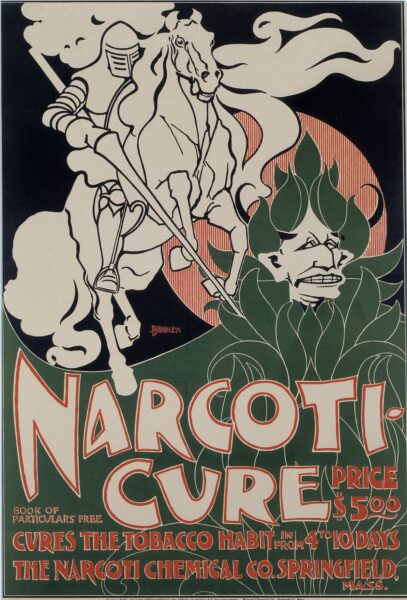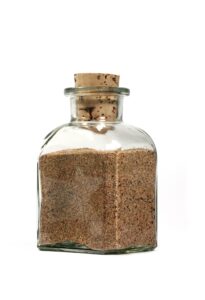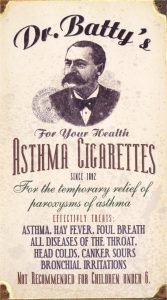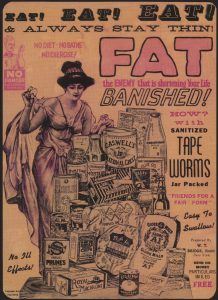Last updated: 20 April 2024
This beautiful 1895 poster, created by leading Art Nouveau designer William H Bradley (1868-1962), formed part of a widespread advertising campaign for Narcoti-Cure, a product that was only available for about a year.
Narcoti-Cure claimed to put smokers, tobacco-chewers and snuff-takers off their filthy habit for life.
‘Why smoke and spit your life away?’ advertisements asked. ‘Why suffer from dyspepsia, heartburn and drains on your vital force?’ According to the promoters, Narcoti-Cure was discovered by a chemist who laboured over the task for ten years before finally hitting the jackpot with a formula ‘entitled to rank with the discoveries of Pasteur and Koch.’
The Narcoti Chemical Company was launched in December 1894 in Springfield, MA, by brothers Benjamin F and Richard L Nichols, well-known businessmen whose principal company manufactured leather belts for use in mill machinery. Benjamin was also president of the Universal Electric Call Company, which provided communication systems in office blocks.
Early advertisements for Narcoti-Cure claimed that the company had been incorporated with capital of $100,000 and occupied ‘commodious and luxurious offices’ with a laboratory at 123 State Street, Springfield.
Narcoti-cure took the form of small yellow tablets and should be taken at a dose of eight a day, at hourly intervals. The product would supposedly cure nicotine addiction within four to ten days, and reassured smokers that they could continue to smoke as much as they wanted while the remedy worked its magic. Soon, the person would lose all desire for tobacco, and ‘the weed won’t taste good.’
Will Bradley’s poster was hailed as a masterpiece by the Boston Globe, and took advantage of a new craze for art poster collecting. It was lithographed in three colours onto heavy paper 14 x 21 inches, and copies could be obtained by sending two 2-cent stamps to the Narcoti Chemical Company in Springfield. The design sought to show that ‘the Devil is in all tobacco’, with the leaf-clad figure of Satan about to be vanquished by a valiant Narcoti-Cure knight.
‘The strength shown in the Narcoti-Cure poster is so apparent and the character so grotesque, that the proprietors of the remedy state that the demand has reached such proportions from collectors and those interested in the new art that an edition of many thousand has been ordered.’ (Boston Sunday Globe)
The poster’s popularity does not seem to have been matched by that of the remedy itself. The Narcoti Chemical Company failed in September 1895, with nominal assets and liabilities of £38,000.
Sources:
‘Marvelous Record’, The Boston Sunday Globe, 17 February 1895.
‘Latest popular craze: collecting art posters is now the proper hobby’, The Boston Sunday Globe, 31 March 1895
‘Brevities by wire’, The Champaign Daily News, 16 September 1895.
‘Death of Benjamin F Nichols’, Fall River Daily Evening News, 24 April 1909.



